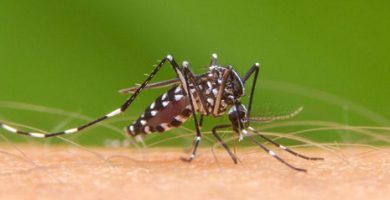What is migration?
We explain what migration is and the types of migration that can occur in animals and humans. In addition, its causes and consequences.
-
What is migration?
When we talk about migration, we refer to the displacement of human populations (or animals, as the case may be) from a usual origin to a new permanent destination , where they again establish their home. It is a term used in the sociological and biological field, according to human migrations or animal migrations.
In the case of animals, these movements can be regular, according to a mating calendar, or definitive, due to pressures of another nature; but in the case of human populations it is usually a more complicated matter, motivated by reasons of a diverse nature and which also impacts the target society .
Migration is a phenomenon that humanity has become accustomed since ancient times , as there have always been groups that for one reason or another leave their place of residence to found new villages or join existing ones.
In fact, throughout history, migration has been a powerful source of cultural, racial and economic diversity , which has encouraged development through exchange.
However, migration does not always occur in a happy context. There are also abundant cases of people displaced by war conflicts, famines or natural disasters , seeking asylum and new opportunities in other latitudes, not to mention exiles and populations expelled for racial or political reasons from their homelands, becoming pariahs or wandering citizens to re-found a home elsewhere.
-
Types of Migration
We have already said that there are two forms of migration, depending on whether we talk about animals or human beings . However, in the latter case, we can also talk about certain migratory categories, which are:
- Depending on how long the displacement lasts . We can talk about temporary migrations, in which the population spends time outside their place of origin and then returns to it; or permanent migrations, in which a trip without return to another place is undertaken.
- According to the nature of the displacement . Depending on whether the move is voluntary or not, we can talk about voluntary migration or forced migration, respectively.
- According to the destination of the displacement . We can talk about internal migrations , when the destination is chosen within the same country, or external migrations, when it is an international destination.
-
Causes of migration

In the case of animal migration, the causes usually have to do with two things:
- Winter and the reproductive season . Many species flee the coming cold traveling south, or travel long distances to return to a specific mating or spawning site.
- Alterations of the habitat . They occur when something breaks the ecological balance of their habitat : the arrival of new species, pollution of the environment or natural disasters.
The causes of human migration can instead be more diverse:
- Economic crisis, poverty or famine . When living conditions in a country or region deteriorate beyond bearable, it is common for human populations to begin to migrate, looking for opportunities elsewhere.
- Wars and armed conflicts . Violence often makes cities and countries uninhabitable , forcing its inhabitants to march towards peaceful or non-conflict areas.
- Exiles and persecutions . Changes in the political regime usually lead to radical changes in the rules of society, and in those cases some people or communities are forced to leave their homes and their lives, expelled outside the country, or flee to save their own lives.
- Natural disasters . Cataclysms, climatic disasters, major industrial or energy accidents, and a large number of accidents that make life difficult in the place of origin.
-
Consequences of migration
Human migrations often have great repercussions in both the place of origin and destination, such as:
- Demographic changes . This includes the emptying of cities and regions of the place of origin, generating a cultural and economic vacuum that sometimes further complicates things for those who stay, and the massive arrival of migrants to the destination, generating a greater demand for local resources .
- Cultural and ethnic exchange . The mixture and miscegenation, the hybridization of cultures and races, brings new and fresh inputs to both the target society and the genetic well of its population, enhancing the difference, variety and cultural richness.
- Changes in economic dynamics . Migrants often send money to their relatives left behind, which represents a new and additional economic movement at the destination. At the same time they provide work force to their new society and sometimes the riches they carry.
- Xenophobia . Resistance to migration by the inhabitants of the destination can reach dangerous limits and trigger violence, racism and other extreme manifestations.





